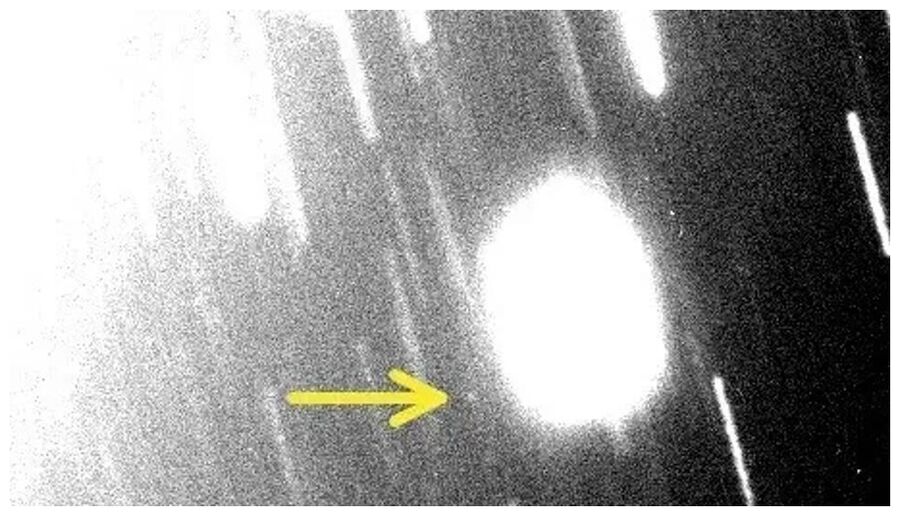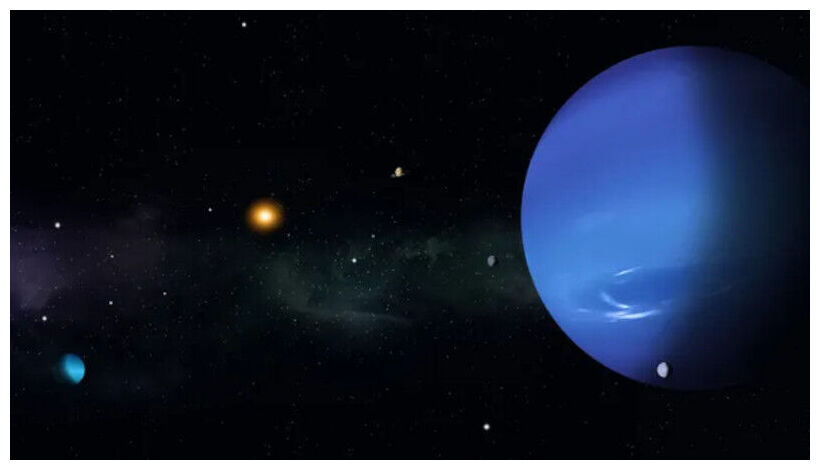The solar system just got three new official residents — a trio of tiny moons, one of which orbits Uranus and two more that circle Neptune.
The three moons were all spotted several years ago but were recently confirmed by the International Astronomical Union's (IAU) Minor Planet Center — the organization responsible for naming new solar system objects such as moons, asteroids and comets. The new trio, which have been given numerical designations, will be given formal, literature and mythology-inspired names in the coming years.
Uranus' new moon, S/2023 U1, is only around 5 miles (8 kilometers) across, making it one of the smallest known moons around any of the eight planets in the solar system, alongside Mars' minute companion Deimos. The diminutive moon, which takes around 680 days to orbit around Uranus, brings the planet's total moon count to 28. Like the other Uranian moons, S/2023 U1 will eventually be named after a character from the plays of William Shakespeare, joining the likes of previously discovered moons such as Titania, Oberon and Puck.
Neptune's new satellites, S/2002 N5 and S/2021 N1, are around 14.3 miles (23 km) and 8.7 miles (14 km) wide respectively. S/2021 N1 takes around 9 years to orbit Neptune, while S/2002 N5 takes almost 27 years to orbit the furthest planet from the sun, which now has 16 known moons. Like other Neptunian moons, the newly recognized bodies will be named after the Nereids — the daughters of the sea god Nereus from Greek mythology.
The new moons were each spotted using ground-based telescopes, which is no mean feat considering their diminutive size and distance from our planet.

The new moons are so small and far away that their movements are normally too small to be noticeable in most ground-based images of Uranus or Neptune, especially compared to distant stars and galaxies in the background. To counteract this problem, the astronomers took long exposure images and stacked them together to create images where background objects, such as stars and galaxies, became blurred. This stacking made objects with relative motions to each planet stand out much more clearly.
This technique allowed the astronomers to "bring the moons out from behind the background noise in the images," Sheppard said.
The new trio aren't the only moons recently discovered around solar system planets. In February 2023, the IAU confirmed 12 new moons around Jupiter, bringing its total to 92 — the highest total of any planet at the time. But in May last year, the IAU confirmed a whopping 62 moons around Saturn, bringing its total to 145 and wrestling the title of most satellites back from Jupiter. A majority of these new moons, which mostly spanned just a few miles across, were also discovered using Earth-based telescopes.
The recent discoveries demonstrate how new techniques, such as the image stacking, and more powerful ground-based telescopes are allowing researchers to peer even further and with greater clarity into the outer reaches of our cosmic neighborhood.




Reader Comments
Let's be content with this little ...
She is spry no doubt - but she needs to keep her own ass clean - her anus as well for eff sake!
If I were to see her dragging her bottom on the ground - which is a way dogs have to release "gland pressure", then I might help her out, but she doesn't do that....
Fishy indeed the smell from the anus gland sac can be.....
Big Bang is the wakening from Dark Matter; shadow self.
Watch where we place our steps.... 👣👣👣👣
WALK vs 'talk'.
you're in my spot...
WALK slow but steady and offer assistance to your emotional world, clearing out personal shackles.
LadyRad Baybars Artex Lemuel Gulliver Anna1 IncenDiary
Awareness is what we hope continues to find expansion.
As above So below.
... off to pulse
My right foot is a little chilly, so I told the Body Mind (with images, not words) to circulate a little more of that red seawater into it. It's actually visibly pulsing. It's not surprising, and it's not the first time.
BK
[Link]
~
Moreover here is the data: You see the specific gravity of earth - the planet of it - tis about 9 times higher than Saturn - so is Titan of its mother planet - if anything - tis likely less dense.
~
Just in case you missed it: make it 8 times less
[Link]
~ Today is 2 29 in the year of 24 and let me say this to you!
Oh the moons to be discovered......they are in front of our faces I say...
On 4824 the moon going to eclipse the sun.....
get in the ribbon of it if you can....
is my advice to U
today.
~
BK, Poem of the Day, in four years the day may return:
22924 1129 now tis 1130 friends.....get in the ribbon
is my advice
Odds are tis not a coincidence but speaks to "relations"....
What U think?
~
BK - 22924 1153 - 11th hour of the 29th day in the month of February - the year of 24.